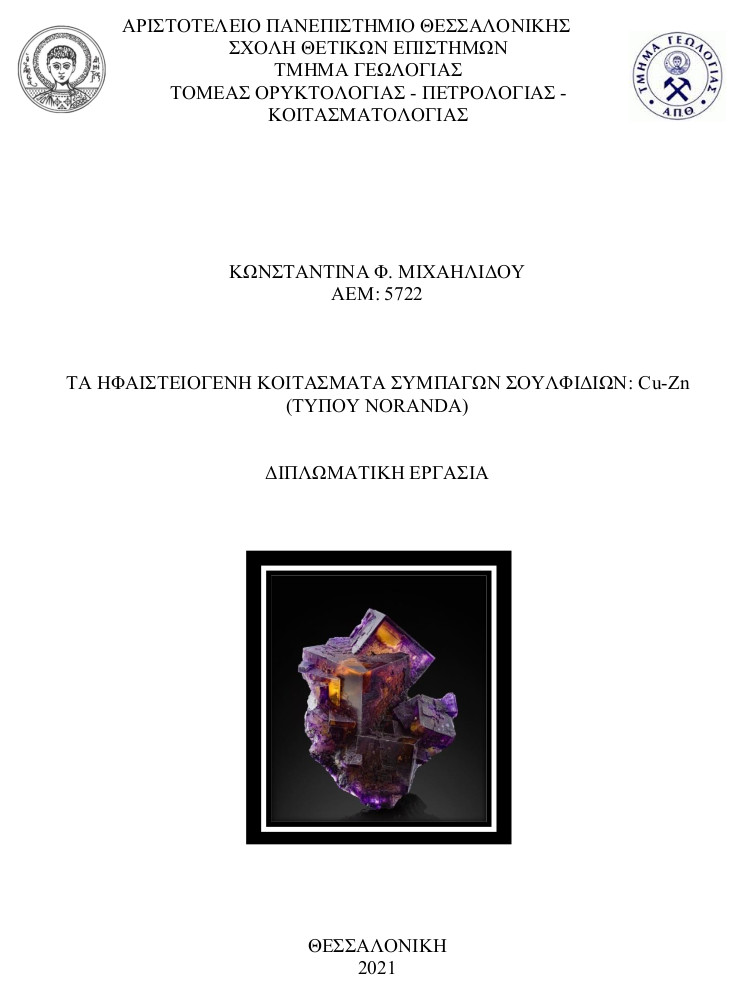
Τα ηφαιστειογενή κοιτάσματα συμπαγών σουλφιδίων: Cu-Zn (τύπου Noranda) = The volcanogenic massive sulphide deposits: Cu-Zn (Noranda type).
Περίληψη
This diploma thesis focuses on the study of the volcanogenic massive sulphide Noranda type, which are great sources of Zn, Cu, Pb, Ag and Au. These deposits are formed in volcanic environments under the sea surface and are located in the bottom of the sea or near it. There is a common similarity in all these deposits that appear in extensional tectonic environments, including such as oceanic seafloor and arc environments. However, the most significant mining sources are faults and calderas. The older deposits were formed in oceanic and continental back-arc environments. They are classified in different categories according to base mental content and host-rock lithology.
Πλήρες Κείμενο:
PDFΑναφορές
De Rosen-Spence A. F and Spence C. D 1975. The place of sulfide mineralization in the volcanic sequence at Noranda, Quebec. Economic Geology, 70(1), 90-101.
Galley, A. G., Hannington, M. D., & Jonasson, I. R. (2007). Volcanogenic massive sulphide deposits. Geological Association of Canada, Mineral Deposits Division, 141-161.
Large, R. R. (1977). Chemical evolution and zonation of massive sulfide deposits in volcanic terrains. Economic Geology, 72(4), 549-572.
Lydon, J. W. (1984). Ore deposit models-8. Volcanogenic massive sulphide deposits Part I: A descriptive model. Geoscience Canada.
Morton, R. L., & Franklin, J. M. (1987). Two-fold classification of Archean volcanic--associated massive sulfide deposits. Economic Geology, 82(4), 1057-1063.
Sangster, D. F. (1980). QUANTITATIVE CHARACTERISTICS OF VOLCANOGENIC MASSIVE SULFIDE DEPOSITS. 1. METAL CONTENT AND SIZE DISTRIBUTION OF MASSIVE SULFIDE DEPOSITS IN VOLCANIC CENTERS. CIM BULLETIN, 73(814), 74-81.
Εισερχόμενη Αναφορά
- Δεν υπάρχουν προς το παρόν εισερχόμενες αναφορές.
